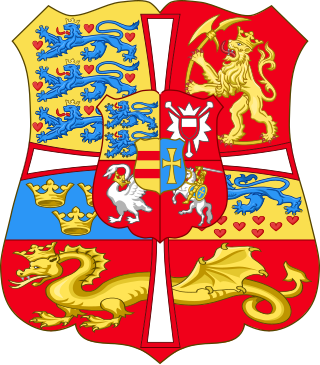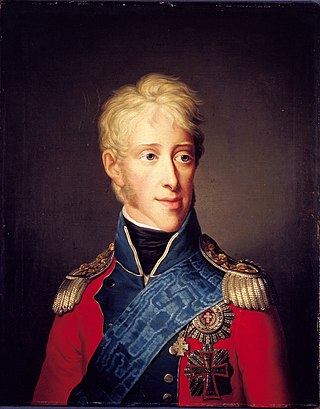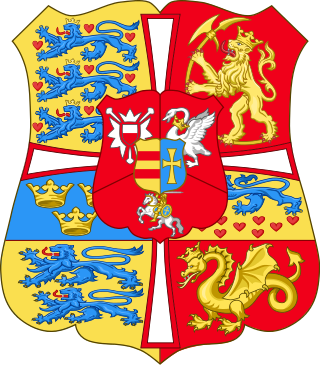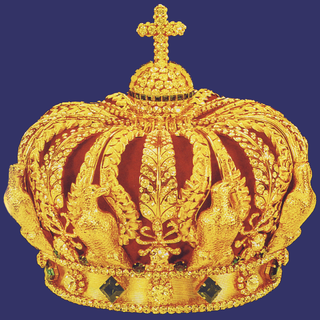
Frederick II was King of Denmark and Norway and Duke of Schleswig and Holstein from 1559 until his death.

Christian VIII was King of Denmark from 1839 to 1848 and, as Christian Frederick, King of Norway in 1814.

Frederick III was King of Denmark and Norway from 1648 until his death in 1670. He also governed under the name Frederick II as diocesan administrator of the Prince-Bishopric of Verden, and the Prince-Archbishopric of Bremen (1635–45).

Frederick VIII was King of Denmark from 29 January 1906 until his death in 1912.

Frederick IX was King of Denmark from 1947 to 1972. Born into the House of Glücksburg, Frederick was the elder son of King Christian X and Queen Alexandrine of Denmark. He became crown prince when his father succeeded as king in 1912. As a young man, he was educated at the Royal Danish Naval Academy. In 1935, he was married to Princess Ingrid of Sweden and they had three daughters, Margrethe, Benedikte and Anne-Marie. During Nazi Germany's occupation of Denmark, Frederick acted as regent on behalf of his father from 1942 until 1943. Frederick became king on his father's death in early 1947. During Frederick IX's reign Danish society changed rapidly, the welfare state was expanded and, as a consequence of the booming economy of the 1960s, women entered the labour market. The modernization brought new demands on the monarchy and Frederick's role as a constitutional monarch. Frederick IX died in 1972, and was succeeded by his eldest daughter, Queen Margrethe II.

Frederick VI was King of Denmark from 13 March 1808 to 3 December 1839 and King of Norway from 13 March 1808 to 7 February 1814, making him the last king of Denmark–Norway. From 1784 until his accession, he served as regent during his father's mental illness and was referred to as the "Crown Prince Regent". For his motto he chose God and the just cause and since the time of his reign, succeeding Danish monarchs have also chosen mottos in the Danish language rather than the formerly customary Latin. As Frederick VI had no surviving sons to succeed him, he was succeeded on the throne of Denmark by his half-first cousin Christian, who was his father's half-brother's son.

Frederick IV was King of Denmark and Norway from 1699 until his death. Frederick was the son of Christian V of Denmark-Norway and his wife Charlotte Amalie of Hesse-Kassel.

Frederick V was King of Denmark–Norway and Duke of Schleswig-Holstein from 6 August 1746 until his death in 1766. He was the son of Christian VI of Denmark and Sophie Magdalene of Brandenburg-Kulmbach.

Frederik, Crown Prince of Denmark, Count of Monpezat, is the heir apparent to the Danish throne. He is the elder son of Queen Margrethe II and Prince Henrik.

Amalienborg is the official residence for the Danish royal family, and is located in Copenhagen, Denmark. Queen Margrethe ll resides in the palace during winter and autumn. It consists of four identical classical palace façades with rococo interiors around an octagonal courtyard ; in the centre of the square is a monumental equestrian statue of Amalienborg's founder, King Frederick V.

Danish Crown Regalia are the symbols of the Danish monarchy. They consist of three crowns, a Sceptre, Globus cruciger, the Sword of state and an Ampulla . The Danish Royal Regalia are kept in the treasury at Rosenborg Castle. The oldest of these is Christian III's sword of state from 1551. They further include King Christian IV's diamond; pearl- and gold-embroidered saddles; objects carved from ivory and rock-crystal; lapidary pieces of precious stones, and brooches in the form of fantastic animals.

The regalia of Norway are items that symbolise the Norwegian monarch's power and majesty. Little is known of the old Norwegian regalia which have since been lost. The majority of the modern regalia date from 1818 and were made for the coronation of Jean Bernadotte as King Carl III Johan.

Carl Gustaf Pilo was a Swedish artist and painter. Pilo worked extensively in Denmark as a painter to the Danish Royal Court and as professor and director at the Royal Danish Academy of Art, as well as in his native Sweden.

Caspar Frederik (Friedrich) Harsdorff, also known as C.F. Harsdorff, was a Danish neoclassical architect considered to have been the leading Danish architect in the late 18th century.

Rosenborg Castle Gardens is the oldest and most visited park in central Copenhagen, Denmark. Established in the early 17th century as the private gardens of King Christian IV's Rosenborg Castle, the park also contains several other historical buildings, including Rosenborg Barracks, home to the Royal Guards, as well as a high number of statues and monuments. The park also holds art exhibitions and other events such as concerts in the summer.

The Crown of Christian V of Denmark was the crown used at the coronation of all of Denmark's absolutist kings. While the reign of such monarchs ended in 1849, the crown is still used during a Danish king's castrum doloris, the last time in 1972. Used by the kings from Christian V to Christian VIII. The crown was made by Paul Kurtz in Copenhagen, 1670–1671. It is made of gold with enamel and table-cut stones, weighting in total 2080 g. The jewel also contains 2 garnets and 2 sapphires, of which the largest dates back to Frederick I of Denmark.

Marienlyst Castle is a palatial residence located in Helsingør, Denmark. It was named after King Frederik V of Denmark's second wife, Juliana Maria, the queen consort of Denmark and Norway. The building formerly served as a royal pavilion of Kronborg Castle and was mostly used as a venue for pleasure and hunting. It was also used by the director-general of the Øresund Custom House, Colonel Adam Gottlob von Krogh and his wife Magdalene, between 1796 and 1847.
Events from the year 1655 in Denmark.

The Crown of Napoleon III was a crown that was made for Napoleon III, Emperor of the French. Although he did not have a coronation ceremony, a crown was made for him on the occasion of the 1855 Exposition Universelle in Paris. The gold crown had eagle-shaped arches and others in the form of palmettes, set with diamonds, and topped by a monde.

The Crown of Christian IV, created for the coronation of Christian IV of Denmark-Norway, on 29 August 1596, is the older of the two surviving crowns of Denmark. Only used for one more coronation, that of his son, Frederick III, in 1648, it is together with the other Danish crown jewels now on display in the Royal Danish Treasury at Rosenborg Castle.



















